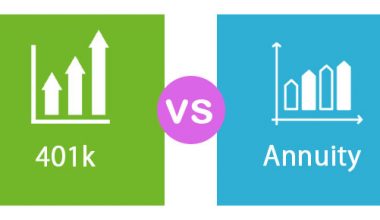Discretionary income is the money remaining after necessary monthly expenses such as rent, utilities, transportation, food, and health-related expenses have been met. In other words, it is the money that remains after paying your required bills. It’s possible that this is also the first expense you’ll look to cut if you’re attempting to save money. In this post, you will learn what and how to calculate with a calculator discretionary vs disposable income.
Relax and enjoy your reading.
What is Discretionary Income?
In the simplest terms, discretionary income is the money that remains after paying for essentials, or money that can be useful for non-essential expenses. When you enroll in income-driven repayment, the federal government determines how much you can afford to pay each month toward your student loans based on your discretionary revenue, which you can calculate using your state’s federal poverty requirements.
What Discretionary Income Is Useful For?
Income-driven repayment (IDR) plans are one option available to borrowers of federal student loans. With these plans, your payments are adjusted depending on your actual earnings, and you pay the adjusted amount over a 20- to 25-year period. In general, IDR plans calculate your payment at 10% or 15% of your discretionary earnings. These arrangements are designed to alleviate borrowers’ burdens and ensure that they can comfortably make their payments.
Changes In Discretionary Income
Discretionary earnings are not a one-time calculation when it comes to setting your payment on an IDR plan. Each year, you must resubmit information about your income, family size, and state of residency. Federal poverty guidelines can also change annually, which means that your monthly payment is quite likely to change.
If your wage increases significantly, your payments may also increase. On the other hand, if you leave your job or reduce your hours, your payments will almost certainly fall. Indeed, unemployed individuals typically receive no monthly payment. These payments will continue to count toward the income-driven loan forgiveness criterion.
Family size also plays a role in determining discretionary spending. Federal poverty limits grow in proportion to family size.
Next in the article is the discretionary income calculator.
Discretionary Income Calculator
When determining discretionary income with a calculator for an IDR plan, the first step is to determine your own income and whether your spouse’s income should be in the calculation. This is dependent on the repayment plan you select. The income of your spouse will be in the calculation of the majority of IDRs plans only if you file jointly. However, the Revised Pay As You Earn (REPAYE) Plan will always incorporate your spouse’s income.
While calculating a discretionary income with a calculator, you have to determine your personal income and search for the federal poverty limits applicable to your state and family size. Subtract your income from the federal poverty level multiplied by 150 percent (or 100 percent if you’re enrolled in the Income-Contingent Repayment Plan). That is the amount of money you have available for discretionary spending.
How Discretionary Income Impacts Your Budget
Discretionary income might serve as an indicator of your financial health. If you maintain a healthy balance after meeting your basic needs, you can invest, save money, and have “fun” money for things like travel, streaming services, and entertainment. If, on the other hand, you have little discretionary earnings, you will need to restructure your costs.
Consider examining your budget or making one if you don’t currently have one to further reduce expenses or another spending. Additionally, a budgeting tool might assist you in gaining a new perspective on how you spend your money.
Disposable vs Discretionary Income
Two key indicators are useful to assess an economic resource’s economic performance: discretionary and disposable income. Although they are frequently useful interchangeably, they have distinctions. Now before we continue with the differences between disposable vs discretionary income, let us take a look again at what both terms mean.
Definition of Disposable Income
Also known as take-home pay, this is the amount of income available to an individual for spending, saving, or investing after moving your income taxes. Individuals’ disposable income is greater than their discretionary income since essential expenses are not in reduction by disposable income. Total taxes are out from income to determine disposable income.
Definition of Discretionary Income
This is the amount of income that an individual has available to save, spend, or invest after paying your taxes and all necessary expenses like shelter, food, and clothes. To arrive at discretionary earnings, revenue taxes and any necessary expenses are subtraction.
The Differences Between Discretionary vs Disposable Income
Definition
Disposable income is the amount of income available to an individual or household for spending, saving, or investing after removing your income taxes.
Discretionary income is the amount of income available for saving, spending, or investing after paying taxes and all necessary expenses such as housing, food, and clothing.
Derivation
Total taxes are a subtraction from income to calculate disposable income.
Income taxes and any necessary expenditures can be reduced to calculate discretionary income.
Percentage Income
Individuals have more disposable income because essential expenses are not out of their income.
Individuals have less discretionary money because essential expenses are out of their revenue.
Summary of Disposable vs. Discretionary Income
After income taxes are out, disposable income refers to the amount of money available to a person or household for spending, saving, or investing. On the other hand, discretionary revenue refers to the amount of money an individual has available to save, spend, or invest after paying taxes and all necessary expenses such as housing, food, and clothes. Understanding disposable and discretionary income is critical for effective personal financial planning.
Next in line to read is how to calculate discretionary income
How To Calculate Discretionary Income
Income available for consumption is a critical factor in determining consumer expenditure. It is also a critical component in determining demand.
However to calculate discretionary income, here is the formula for it: Personal Income – Personal Income Taxes
The Importance of Available Income
Analysts use it to determine consumer spending, payment capacity, likely future savings, and the overall health of a country’s economy.
Disposable income can be useful to estimate households’ financial reserves and money available for spending on goods and services.
An economic indicator is a metric that is used to monitor, measure, and evaluate the macroeconomy’s overall health. Economic statistics and measurements include disposable income and personal savings rates. When all necessary expenses – such as food, health insurance, and mortgage – are deducted from the disposable income, the result is discretionary income. It is a portion of disposable income that remains after basic expenses are met. Earners have the discretionary revenue to save or spend as they like. The percentage of disposable income that may be withheld is limited to 25% of an individual’s disposable income or the amount necessary to ensure that an individual’s weekly income exceeds 30 times the federal minimum wage, whichever is lower.
Income Disposable Per Capita
Disposable income is a useful indicator of an economy’s health. As a result, it is a critical metric that government officials and analysts scrutinize. Disposable income data enables analysts to assess a consumer’s ability to make purchases, make payments, and save for the future. The Organization for Economic Cooperation and Development (OECD) compiles financial data from various countries and monitors and reports on families’ per capita disposable income.
What Is Discretionary Income Example?
An example of discretionary income is the money remaining after necessary monthly expenses such as rent, utilities, transportation, food, and health-related expenses have been met.
What Is Defined as Discretionary Income?
This is the amount of income that an individual has available to save, spend, or invest after taxes and all necessary expenses like shelter, food, and clothes are paid. To arrive at it, income taxes and any necessary expenses are deducted.
How Do You Calculate Discretionary Incomes?
Income available for consumption is a critical factor in determining consumer expenditure. It is also a critical component in determining demand. However, here is the formula to calculate Disposable Income: Personal Income – Personal Income Taxes.
What Are the 3 Income Categories?
Earned income, passive income, and portfolio income are the three primary sources of funds for most people. Wages, salaries, tips, and commissions are all examples of earned money. Rental properties, royalties, and limited partnerships are all potential sources of passive or unearned income. Interest, dividends, and capital gains are all examples of portfolio or investment income.
What Is a Good Discretionary Income?
The 50-20-30 rule is a well-known guideline for allocating one’s income between essentials, savings, and discretionary spending. The suggested allocation is 50% for essentials, 20% for savings, and 30% for everything else.
What’s the Difference Between Income and Discretionary Incomes?
After deductions and payments have been made, what is left over is your “disposable income.” After paying taxes and essential living costs, what’s left over is known as “discretionary income” (rent, mortgage, food, heat, electricity, clothing, etc.). Your disposable income serves as the basis for your discretionary income.
Is Discretionary Income Profitable?
Earnings at the seller’s discretion are a cash-flow-based indicator of the health of a business that is privately held and operated by its founder. Net profit is a company’s earnings before interest and taxes, minus the value of any advantages accruing to the company’s owners, any non-cash expenses, any special investments, and any other non-recurring or incidental costs or revenues.






